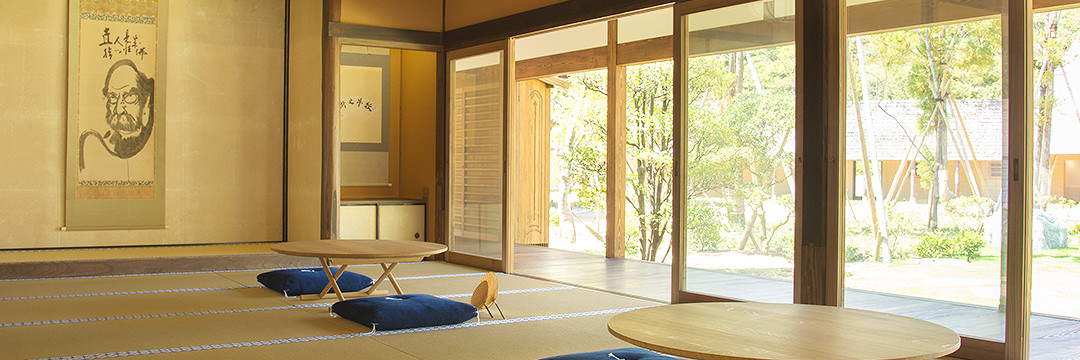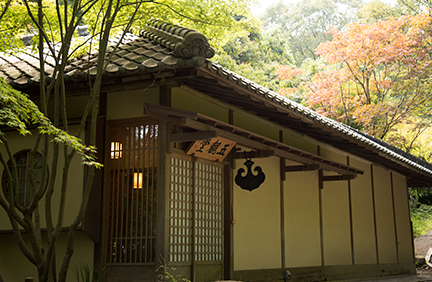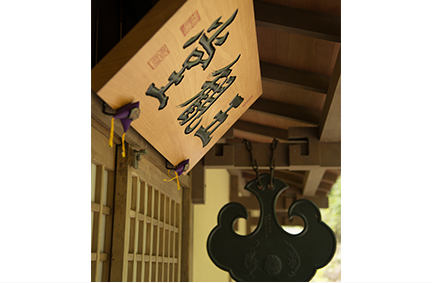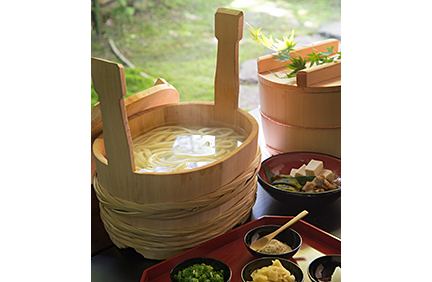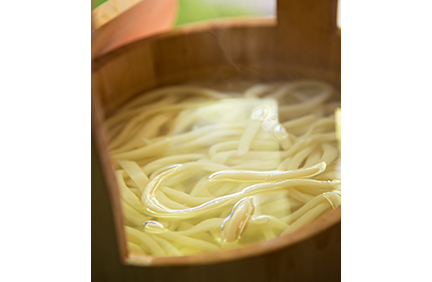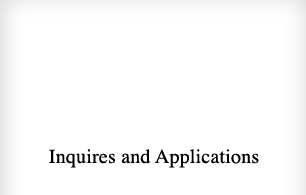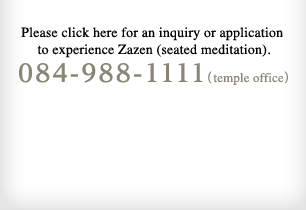
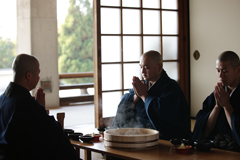
| Location | Gokan-dō |
|---|---|
| Menu | Shinshō-ji udon ¥1,200 ※A separate admission fee is required. |
| Open | 11:00-14:30 |
At the training monastery in Kennin-ji (the head temple of Shinshō-ji) the monks eat on the days with a 4 or a 9 boiled udon at lunch.
"udon offering" days throughout the year thanks to the donations of believers. One can eat as much udon as one likes. Usually unsui eat seven to eight servings, but some persons are able to consume more than ten.
Shinshō-ji udon: The udon dear to Zen priests
On the morning of every day that ends with four and nine (shikunichi), training monks clean the temple extra thoroughly, and are allowed to shave their heads and take a bath. For unsui, the best treat is udon and Zen priests hold dear and cannot forget the udon of the monks' hall. One reason is that normally any sounds, besides the voices reading sutras and the bells and clappers, are strictly prohibited during the meals, but the udon is required to be eaten very noisily.
The Origins of the Shikunichi meals
The origins of eating udon on shikunichi is not entirely clear. However, one of the reasons that the Rinzai sect is inseparably connected to udon might be that Enni Bennen (National Teacher Shōichi, 1202-1280), the founder of the Kyōto Rinzai sect headquarters Tōfuku-ji Temple, brought flour milling techniques back from China in 1241.
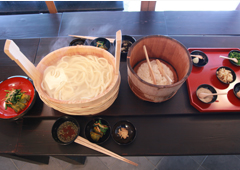
Jihatsu and Unsui chopsticks
In the monks' hall, meals are taken three times a day using a five-layer set of dishes called jihatsu (literally, "held alms bowls"). When eating udon with them, they are lined up in order of size (largest to smallest) from left to right.
They are filled in this way:
First Dish: Udon broth (normally used for rice porridge or cooked rice and barley)
Second Dish: Side dish (normally used for miso soup)
Third dish: Takuan pickles (normally side dish and takuan)
The chopsticks are called "unsui chopsticks", they are very long and thick. In the Rinzai sect, sutras are always read before meals, during which wooden clappers are used. These chopsticks serve as a replacement if there are no clappers.
The sutras read before meals include the Heart Sutra and others. Another one is the "Five Meal Contemplations" verse, and therefore this place here is called Gokan-dō ( Five Contemplations Hall).
One: Considering the amount of effort that brought us this food, I reflect on its origins.
Two: I reflect on whether my virtue and practice is adequate to receive this food.
Three: It is of the utmost importance to guard my mind and leave behind errors such as greed.
Four: Taking this good medicine is for healing my withered body.
Five: I receive this food in order to reach Buddhahood.
If you're able to appreciate your meal by using jihatsu, your way of thinking about food might change.
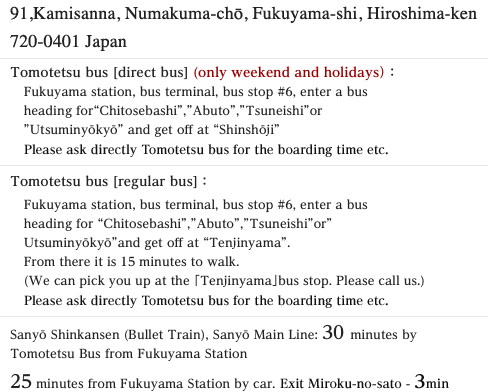 91,Kamisanna, Numakuma-chō, Fukuyama-shi, Hiroshima-ken 720-0401 Japan
91,Kamisanna, Numakuma-chō, Fukuyama-shi, Hiroshima-ken 720-0401 Japan
Tomotetsu bus (direct bus, only weekend and holidays)
Fukuyama station, bus terminal, bus stop #6, enter a bus heading for 『Miroku no Sato direct bus』 and get off at 「Shinshōji」
Tomotetsu bus (regular bus)
Fukuyama station, bus terminal, bus stop #6, enter a bus heading for 「Chitosebashi」,「Abuto」,「Tsuneishi」or「Utsuminyōkyō」and get off at 「Tenjinyama」. From there it is 15 minutes to walk.(We can pick you up at the 「Tenjinyama」bus stop. Please call us.)
※Please ask directly Tomotetsu bus for the boarding time etc.
084-952-3100
Sanyō Shinkansen (Bullet Train), Sanyō Main Line: 30 minutes by Tomotetsu Bus
25 minutes from Fukuyama Station by car.
Exit Miroku-no-sato - 3min







